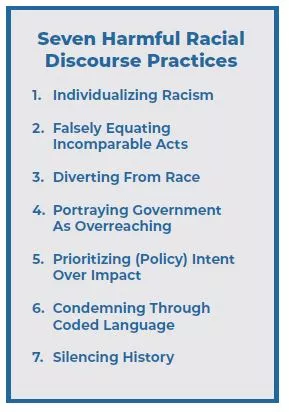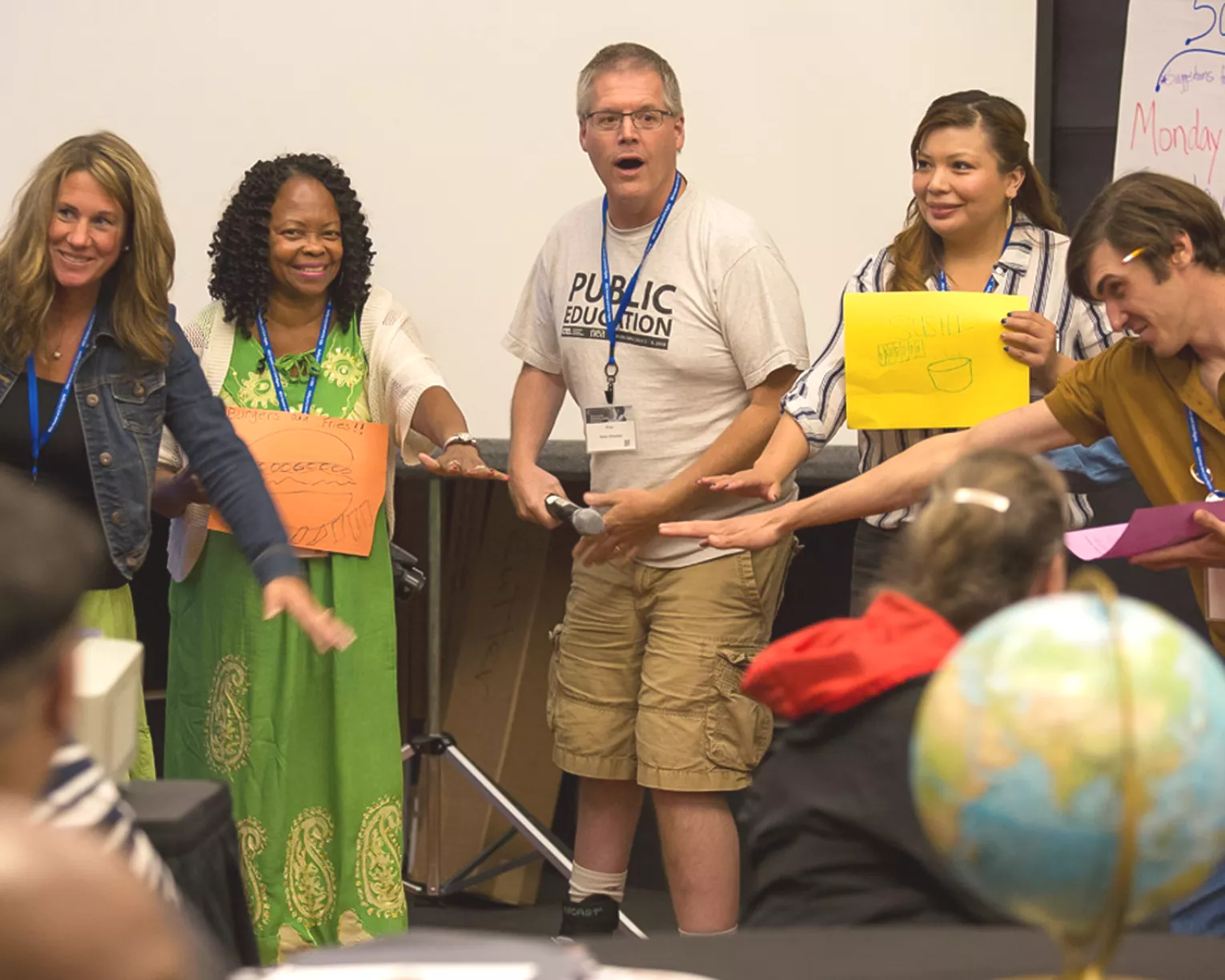Background
This resource identifies and describes seven harmful racial discourse practices that are found not just in mainstream media, but also more broadly throughout our society. They are used by public officials and their staffs, by lawyers and judges, and by advocates of various political backgrounds, by cultural and entertainment figures, and by others with power and influence over public perception and behavior.

We provide definitions for the practices and describe the specific negative effects these practices have on racial discourse. Each practice discussion also contains an example or two of its use from recent events—some carried out by news media and others carried out by public officials and their staffs, by lawyers and judges, and by advocates of various political backgrounds, by cultural and entertainment figures, and by others with power and influence over public perception and behavior.
Result
Taken as a whole, we argue that:
- When these harmful racial discourse practices succeed, either individually or acting collectively within a single narrative, they stifle the general public’s understanding of systemic racism.
- The seven harmful racial discourse practices reinforce the common misconception that racism is simply a problem of rare, isolated, individual attitudes and actions, and most damagingly, that as a significant barrier to the success of people of color, racism is a thing of the past.
- Taken together, these harmful discourse practices often ostensibly promote a blanket standard of “colorblindness,” while simultaneously promoting so-called “race-neutral” policies and practices that reinforce the power of white anxiety and fear in policymaking and decision-making.
Everyday recommendations for how readers can help overcome these harmful racial discourse practices follow this section of the report.
Racial Justice in Education Links
Suggested Further Reading
Are you an affiliate?

